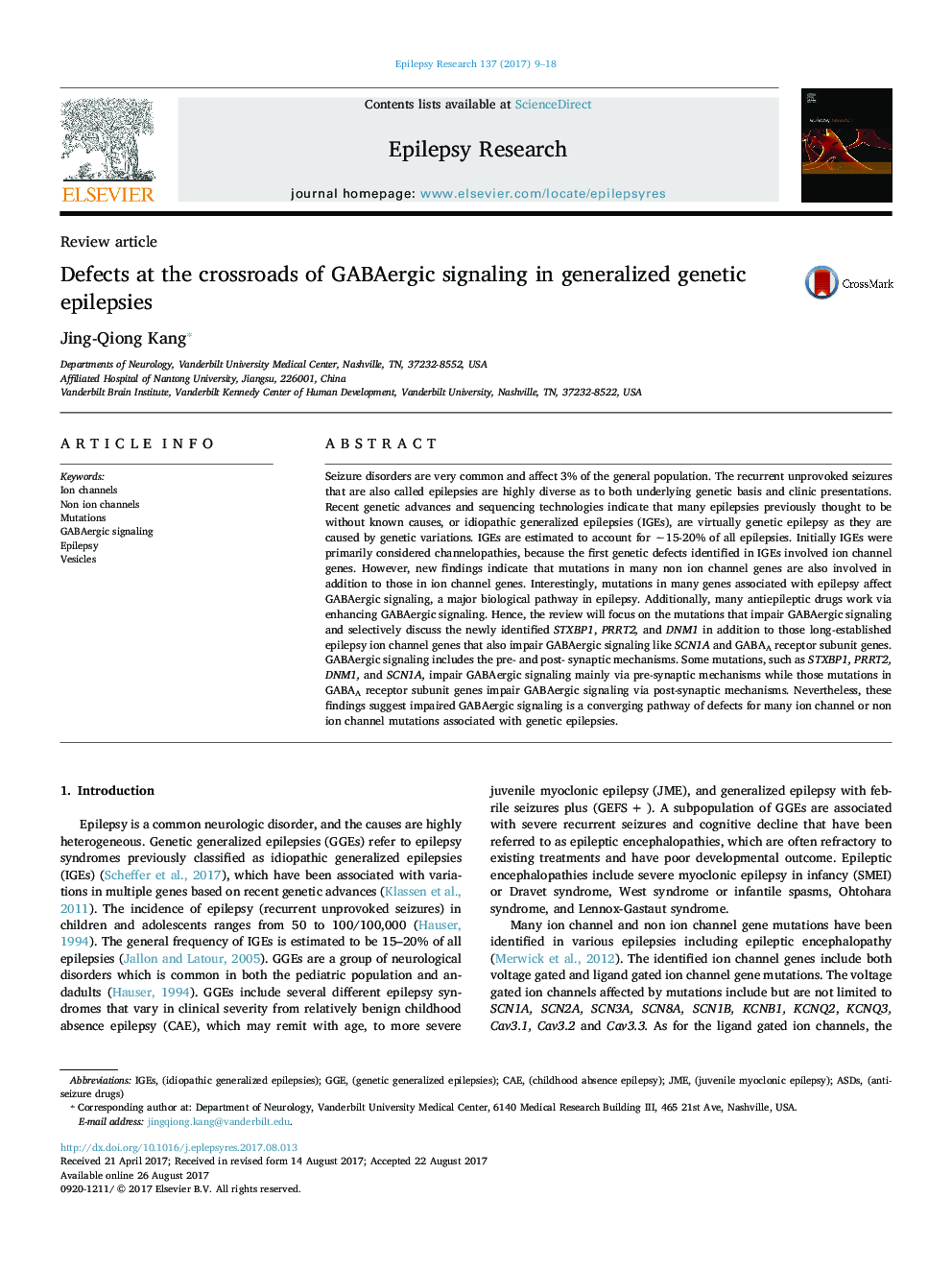| Article ID | Journal | Published Year | Pages | File Type |
|---|---|---|---|---|
| 5628642 | Epilepsy Research | 2017 | 10 Pages |
â¢Impaired GABAergic signaling is a converging pathway for epilepsies associated with mutations in several unrelated genes.â¢GABAergic signaling could be impaired via pre- and post-synaptic mechanisms.â¢Mutations in some genes like STXBP1, DNM1, PRRT2 and SCN1A may impair GABA release via pre-synaptic mechanisms.â¢Mutations in some genes like GABRA1, GABRG2, GABRB2 and GABRB3 impair GABAergic signaling via post-synaptic mechanisms.â¢Modulating GABAergic signaling remains an essential therapeutic approach for genetic epilepsies.
Seizure disorders are very common and affect 3% of the general population. The recurrent unprovoked seizures that are also called epilepsies are highly diverse as to both underlying genetic basis and clinic presentations. Recent genetic advances and sequencing technologies indicate that many epilepsies previously thought to be without known causes, or idiopathic generalized epilepsies (IGEs), are virtually genetic epilepsy as they are caused by genetic variations. IGEs are estimated to account for â¼15-20% of all epilepsies. Initially IGEs were primarily considered channelopathies, because the first genetic defects identified in IGEs involved ion channel genes. However, new findings indicate that mutations in many non ion channel genes are also involved in addition to those in ion channel genes. Interestingly, mutations in many genes associated with epilepsy affect GABAergic signaling, a major biological pathway in epilepsy. Additionally, many antiepileptic drugs work via enhancing GABAergic signaling. Hence, the review will focus on the mutations that impair GABAergic signaling and selectively discuss the newly identified STXBP1, PRRT2, and DNM1 in addition to those long-established epilepsy ion channel genes that also impair GABAergic signaling like SCN1A and GABAA receptor subunit genes. GABAergic signaling includes the pre- and post- synaptic mechanisms. Some mutations, such as STXBP1, PRRT2, DNM1, and SCN1A, impair GABAergic signaling mainly via pre-synaptic mechanisms while those mutations in GABAA receptor subunit genes impair GABAergic signaling via post-synaptic mechanisms. Nevertheless, these findings suggest impaired GABAergic signaling is a converging pathway of defects for many ion channel or non ion channel mutations associated with genetic epilepsies.
